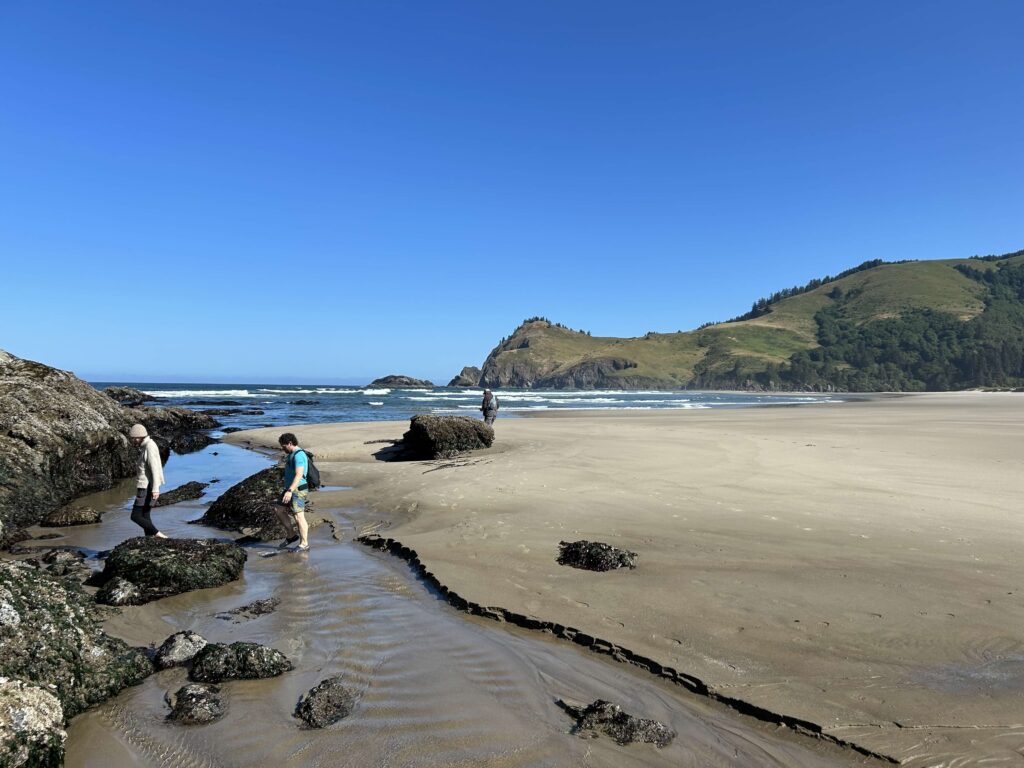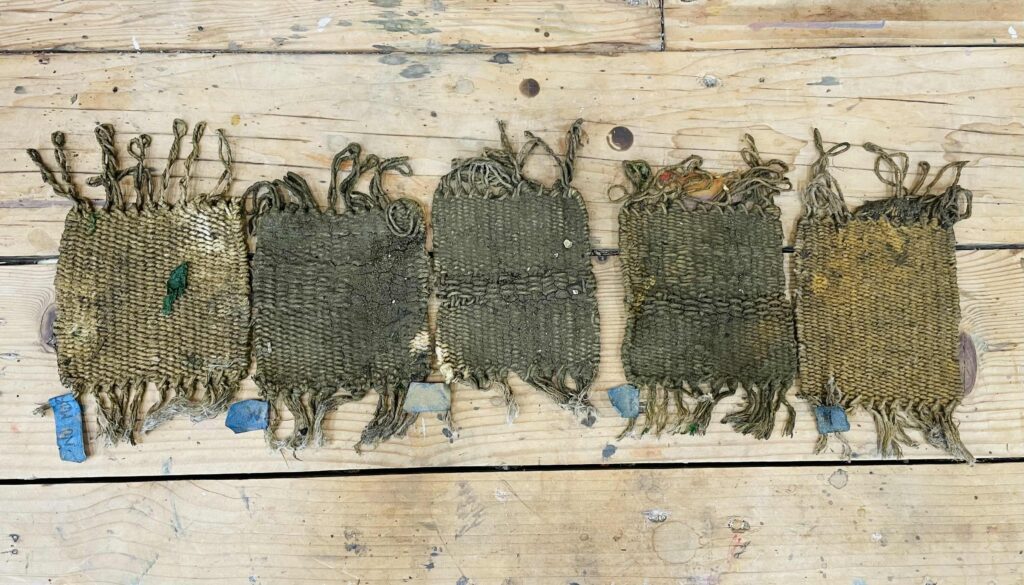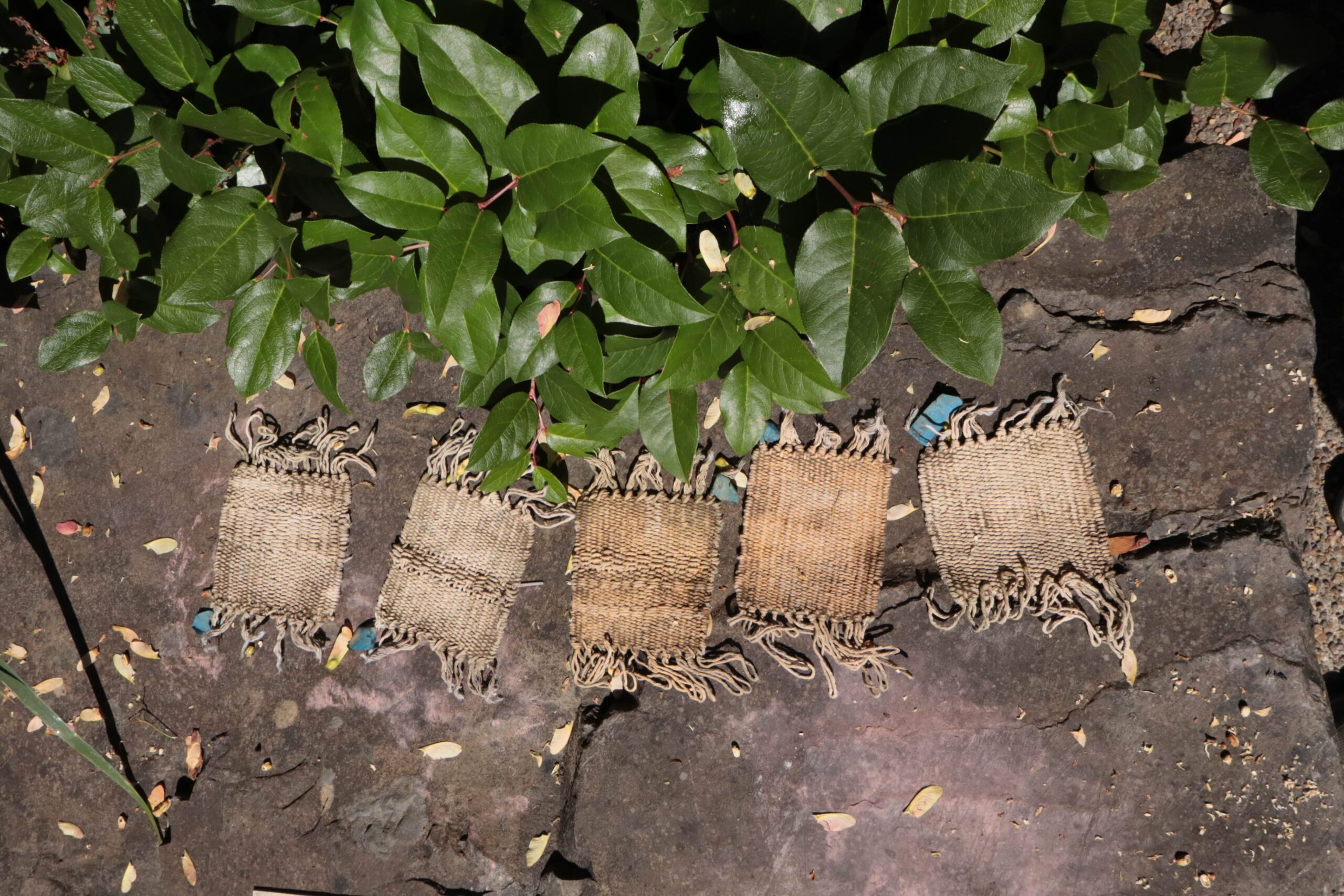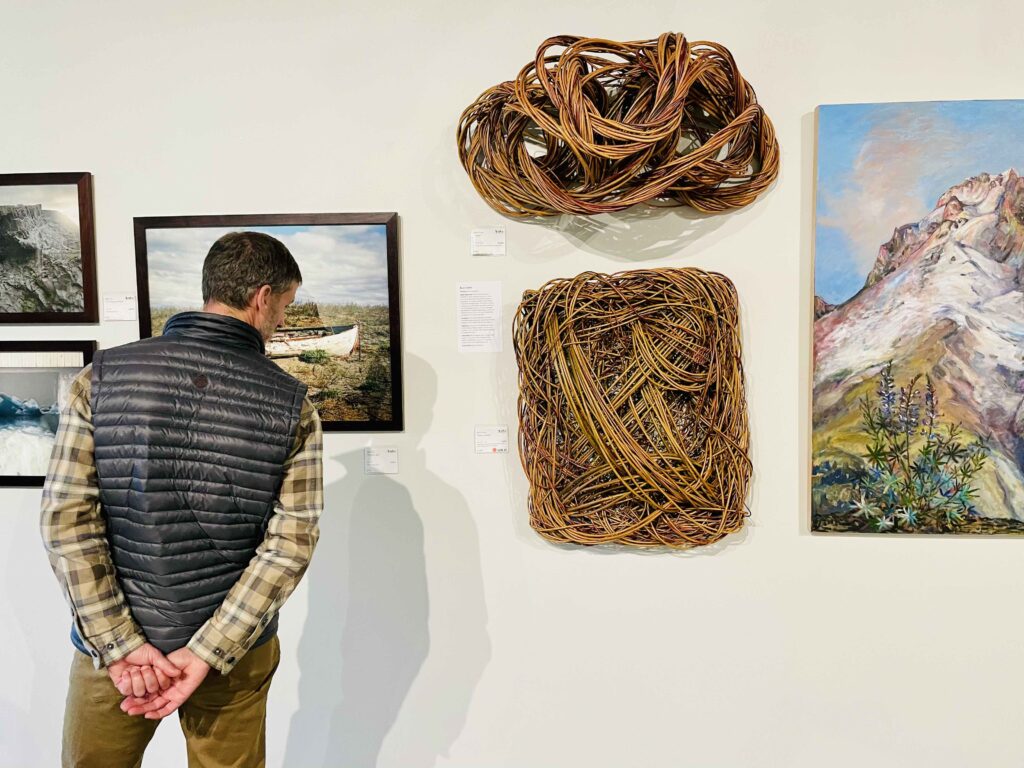September Director's Journal

“I can’t wait to rinse them and see what the estuary created,” Sitka workshop instructor Sondra Holtzman announces with the delight of a nine-year-old archaeologist unearthing a backyard treasure.

On the studio table are a series of small weavings—part artwork, part scientific test strips—made from natural vintage cotton, now caked in mud and silt.
“We buried them in July when I was last here to teach,” she explains, describing her collaboration with Sitka’s Ecology Manager Jake Simondet, lead Campus and Workshop Host GraySea Huber and others. Together, they set up a quiet summer experiment to see how the natural fibers, left undisturbed, might reveal the subtle ways time and tide leave their mark. “I wanted to see how time in the estuary would change them.”
“There’s so much going on that I can’t see,” Holtzman reflects on her inspiration to let organisms, chemistry, tides and temperatures transform the cloth over time. “It’s what we can’t see that is sometimes the most magical. Release all expectations and see what happens.”

Her teaching carries this same spirit. With titles like From Fire to Fabulous: A Charcoal Immersion and Mood, Magic and Atmosphere in Oil and Soft Pastel, Holtzman invites participants to notice natural materials, explore alchemy, observe weather and embrace the challenge of expressing the ephemerality of a changing sky.
“The estuary is one of my happiest places,” she shares. “I spend a couple of hours down there every day when I’m at Sitka—observing, listening. The closer to nature I stay, the happier and more peaceful I am.”
Meanwhile in Portland, another time-based experiment is unfolding as Exhibits Coordinator—and longtime Invitational artist—Gillian Freney prepares to host the 31st annual Sitka Art Invitational, her first year leading the show.

“I never grew bored of being a participating artist in the Sitka Art Invitational,” Gillian reflects. “Every Invitational brings surprises. Every year the art feels fresh. While I eagerly anticipate the artistic variety, I also appreciate the common thematic threads.”
Each Invitational is a collective effort: 100 artists bringing their work, a community of collectors and viewers and a dedicated corps of volunteers who give generously of their time and enthusiasm. “I’ve gained a real appreciation for the sheer collaborative force required to bring this event together,” Gillian says. “It’s a logistical juggling act made possible only by the cheerful determination of a small army of people who share a belief in the value of nature, art, education and the ties that bind the Pacific Northwest artist community.”
If Holtzman’s teaching reminds us to let go and trust the hidden processes at work, the Invitational echoes that same lesson on a community scale. When the gallery doors open on October 10 and the veil is lifted on a year of new work, the private explorations of 100 artists will be revealed—displayed together in public conversation with one another for the first time.
That moment of revelation is why the Invitational feels new every year: the surprise of seeing what emerges, what connects and what we couldn’t have imagined until it’s all in front of us. The exhibit’s evolution mirrors nature itself—familiar yet never the same, full of unexpected juxtapositions and new expressions that deepen our sense of place and possibility.
“It pleases me to know the Sitka Art Invitational has been evolving for 31 years,” Gillian shares. “It pleases me even more to think that in 31 more years, the art, ecology and human endeavor gathered here will be something we can’t yet picture.”
Every year, new voices and visions enter the conversation. The beauty lies in watching what emerges when they come together—unexpected, connected and alive.
- Journals